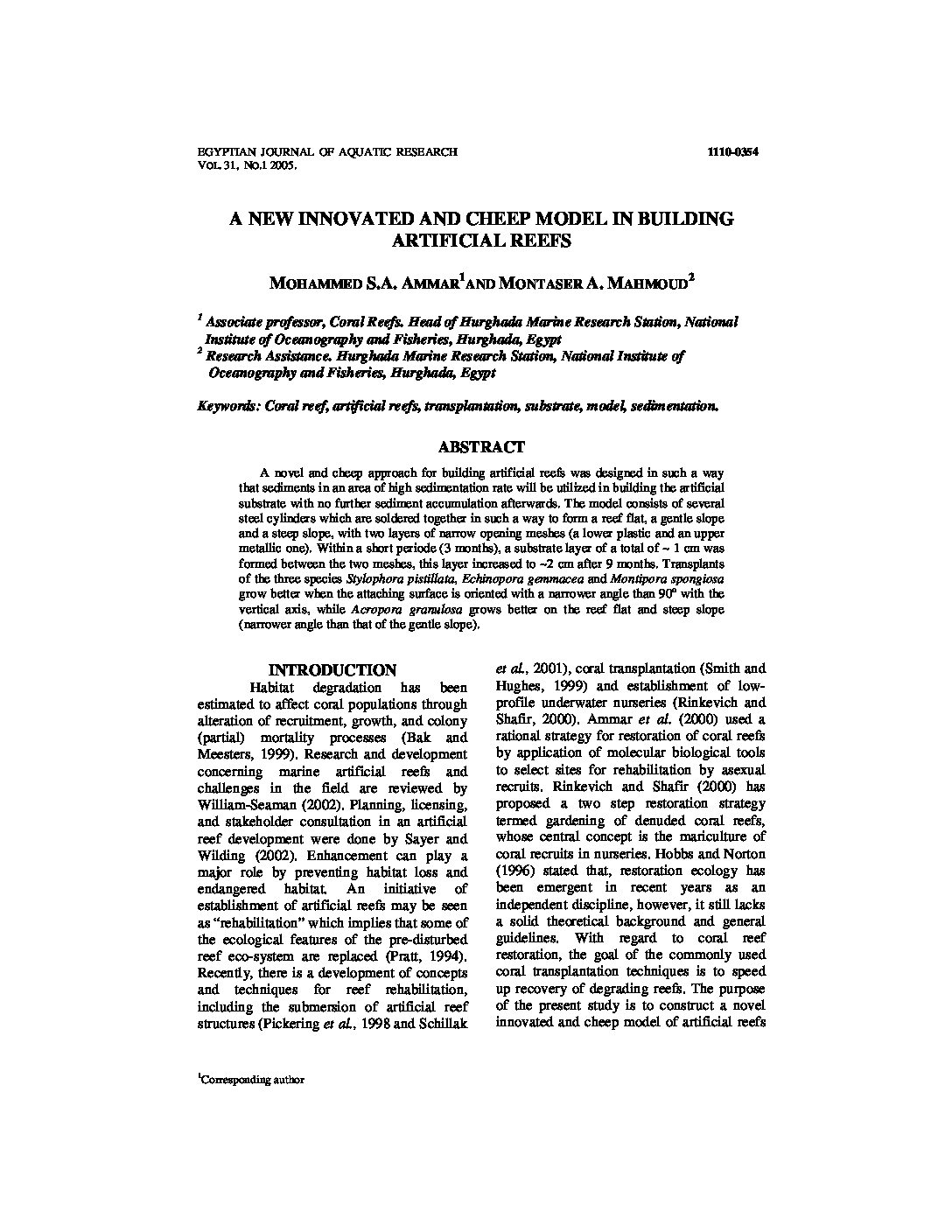Categories
vol-31STUDIES ON EDWARDSIELLA INFECTION IN
OREOCHROMIS NILOTICUS
NAGLA. F. GALAL**SAFINAZ G.M. ISMAIL*, R.H.KHALIL**AND
M.K. SOLIMAN**
* Inst. of Oceanography and Fisheries, Alex. Branch.
** Dept. of Avian & Aquatic Animal Med. Fac. of Vet. Med. Alex. Univ.
Key words: Edwardsiella, Infection, Oreochromis niloticus
ABSTRACT
This study was planned to investigate the isolation of Edwardsiella tarda (E.tarda) from
naturally infected O. niloticus and identification of the isolated pathogen by different
methods. Moreover, the pathogenesis of the isolated E. tarda was carried out by injection
of O. niloticus with E. tarda. Seven isolates of E. tarda were successfully isolated from
naturally infect. O. niloticus.
The main clinical sings of naturally infected fish with E. tarda were, loss of scales
from some areas of the body, excessive mucous allover the body surface with petechial
haemorrhage. Large necrotic lesions were extending down into the musculature in the
posterior part of the body especially at caudal peduncle with rottened fins, also reported.
These cavities were characterized by hyperemic borders and emitting foul odour.
Postmortem changes in naturally infected fish showed generalized septicemia in
most of the internal organs and severe distension of gall bladder. In advanced cases of
Edwardsiellosis sloughing area of the dorsal musculature was seen.
Median lethal dose (LD50
) of isolates was 10
4 CFU/ml.
The clinical sings of experimentally infected fish revealed, loss of scales and coloration,
as well as severe edematous swelling at the site of infection.
After 2 days post-infection, the skin was raised forming hemorrhagic swelling.
Hemorrhagic exudates with offensive odor was also observed. While the PM lesions
were, congestion of kidney, and the liver appeared pale or of yellowish discoloration.
Histopathologicl changes and antibiotic sensitivity were also evaluated. This study
was successfully, clarify the role of E. trada as an important fish pathogen under cultured
conditions







